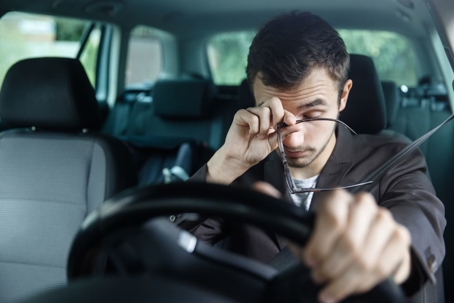According to the National Highway Traffic Safety Administration (NHTSA), drowsy driving resulted in nearly 800 fatalities in the United States in 2017, as well as another estimated 50,000 injuries. Yet, many motorists continue to get behind the wheel when they are sleepy or fatigued.
In today’s fast-paced culture, many people simply don’t get the recommended six to eight hours of sleep a night, meaning there are likely hundreds of thousands or even millions of sleepy drivers out on our nation’s highways and roads. This puts other motorists and their passengers at risk.
Drowsy Driving Fast Facts:
- In 2017, there were approximately 91,000 reported motor vehicle accidents resulting from drowsy driving
- As a result of those drowsy driving accidents, 795 people died
- That same year, approximately 50,000 people were injured due to drowsy driving
- Most drowsy driving accidents occur between 12:00 a.m. and 6 a.m. or in the late afternoon
- Drowsy driving accidents occur most frequently in rural areas
- Many drowsy driving accidents involve a single motorist
Drowsy Driving Can Be as Dangerous as Drunk Driving
Believe it or not, drowsy driving can be just as dangerous as driving while intoxicated or drunk. This is because, much like the effects of alcohol, excessive fatigue affects your ability to concentrate, react to obstacles/situations, and—most importantly—stay awake. A driver who actually falls asleep behind the wheel is the most dangerous motorist on the road.
Drowsy driving accidents often involve a vehicle moving at a high rate of speed, either off the roadway or into other lanes of traffic, with no evidence of braking. This leads to devastating head-on collisions and other deadly accidents.
Some reports indicate that operating a motor vehicle after being awake for 18 consecutive hours is similar to driving with a blood alcohol concentration (BAC) of 0.05%, which is nearly the legal limit of 0.08%. Driving after a full 24 hours without sleep is akin to operating a motor vehicle with a BAC of 0.10%.
Tips for Avoiding Drowsy Driving
The easiest and most important thing you can do to avoid drowsy driving is to simply not drive when you feel tired or fatigued. If you are already behind the wheel and start to feel drowsy, pull over to a safe, well-lit area.
Find a hotel or rest stop where you can sleep in your car (if it is safe and legal to do so) before attempting to get back on the road. Try to sleep for a minimum of 20 minutes before driving again.
Here are some more tips for avoiding driving while fatigued:
- Be aware of how medications may affect you - Some common over-the-counter medications and prescription drugs may make you drowsy. Never attempt to drive after taking these or any type of sleep medication.
- Don’t mistake caffeine for a viable substitute for sleep - While coffee, tea, soda, or energy drinks may initially give you a boost of energy, the effects are often short-lived, and you may find yourself feeling drowsy shortly after consuming them.
- Never drink alcohol before driving - It is not only illegal to operate a motor vehicle with a BAC of 0.08% or higher, but consuming alcohol can also cause drowsiness. Even if you believe you have sufficiently sobered up, you may still feel the sleepy effects hours later.
- Avoid driving between midnight and 6 a.m., as well as in the late afternoon - These are the hours during which you are most likely to feel sleepy, so it is better to avoid driving during these times whenever possible.
- Get adequate sleep - There is simply no substitute for sufficient, quality sleep—anywhere from six or seven to eight hours a night. Remember that sleep deprivation can build up over time. Aim to get enough sleep every night as much as possible.
If you were injured in an accident caused by a drowsy driver, we can help. Contact Palmisano & Goodman, P.A. for a free consultation with one of our experienced personal injury attorneys.

